[Porsche 911 Turbo (991.1) Test Drive] Why Porsche’s ‘Turbo’ Is Truly Special!
公開日:2020.08.28
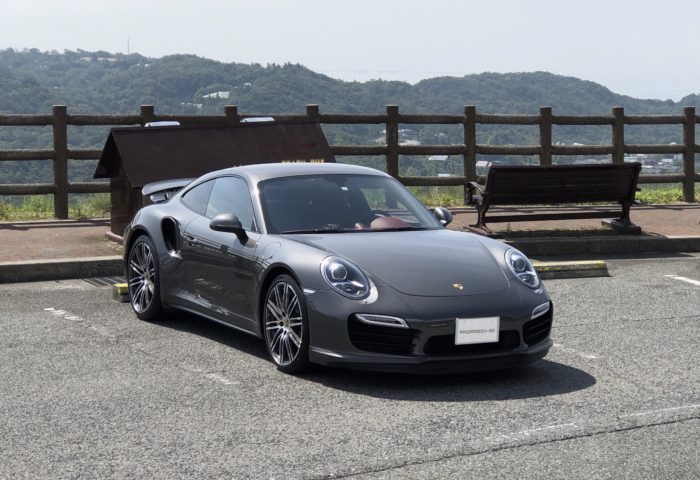
One fine day, my husband casually went for a drive on the Royu Driveway, and ended up alongside a 911 Turbo, hit it off with the owner, and they swapped cars for a spin. So, he wrote up a test drive report—please enjoy it if you’re interested.
コンテンツ
About the Porsche 911 Turbo
Recently, I was fortunate enough to get a chance to test drive a Porsche 911 Turbo (early 991 model). It was my first experience with a 991 Turbo, and as expected, the ‘Turbo’ is on a whole different level compared to the standard models. I’d like to share some thoughts on that here.
First, let’s clarify what Porsche’s ‘Turbo’ really means.
The Porsche ‘Turbo’ lineage goes back to the 930-type 911 Turbo launched in 1975. It debuted as the flagship of the 911 series and became famous in Japan partly thanks to manga like Circuit no Ōkami and Wangan Midnight. Enthusiasts from a slightly older generation than me often have a passionate love for the 930 Turbo.
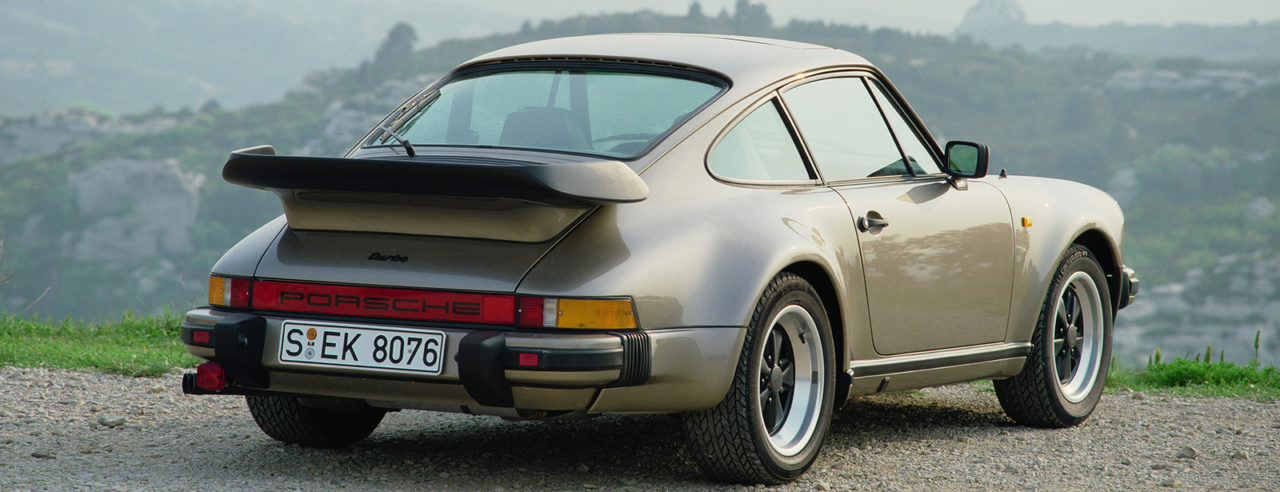
930 Turbo
Nowadays, except for the GT3 variants, all Porsche 911s come with turbocharged engines. In other words, even the base ‘911 Carrera’ now has a turbo engine.
However, these are not referred to as ‘Turbo’ models, which can be a bit confusing.
The title ‘Turbo’ is reserved exclusively for Porsche’s flagship models. Proof of this is that even the fully electric Taycan’s top trims carry the ‘Turbo’ name despite having no engine at all.
About the Porsche 911 Turbo I Test Drove
The car I drove this time was the 991 Turbo model born about 40 years after the original 930. Its Agate Grey Metallic body looked flawless, showing no signs of its 5 years and 70,000 km on the clock.
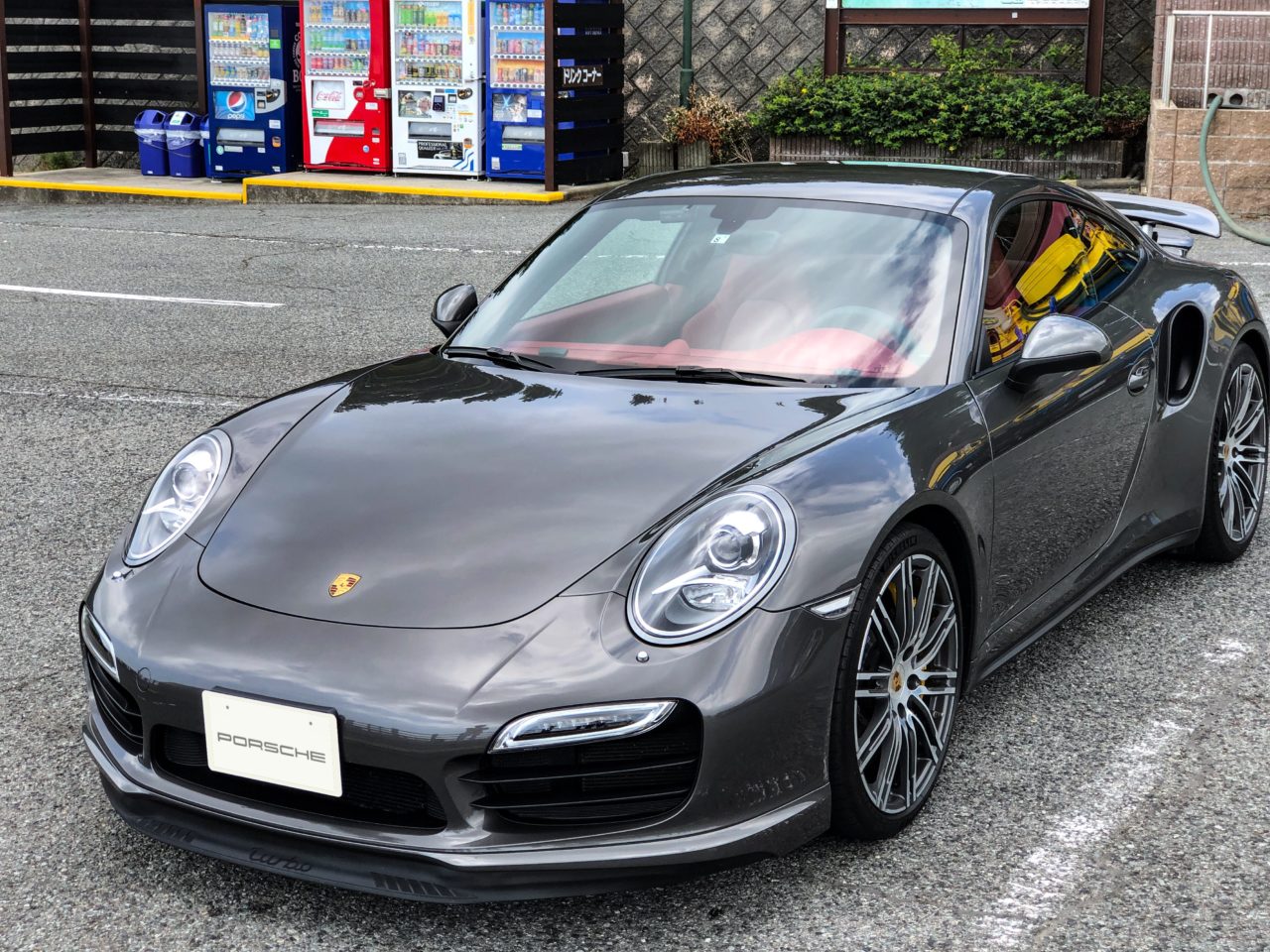
At the wheels gleamed the ultra-expensive Porsche Ceramic Composite Brakes (PCCB), making it easy to mistake this for a deluxe ‘Turbo S’. The owner told me that although it’s a ‘Turbo’, they chose options to make it almost identical to a ‘Turbo S’. So this is a very rare ‘Turbo’ model indeed.
The cockpit featured the classic red interior typical of Turbo models—absolutely stunning. The white accents on the instrument panel stood out, creating a luxurious yet sporty atmosphere.
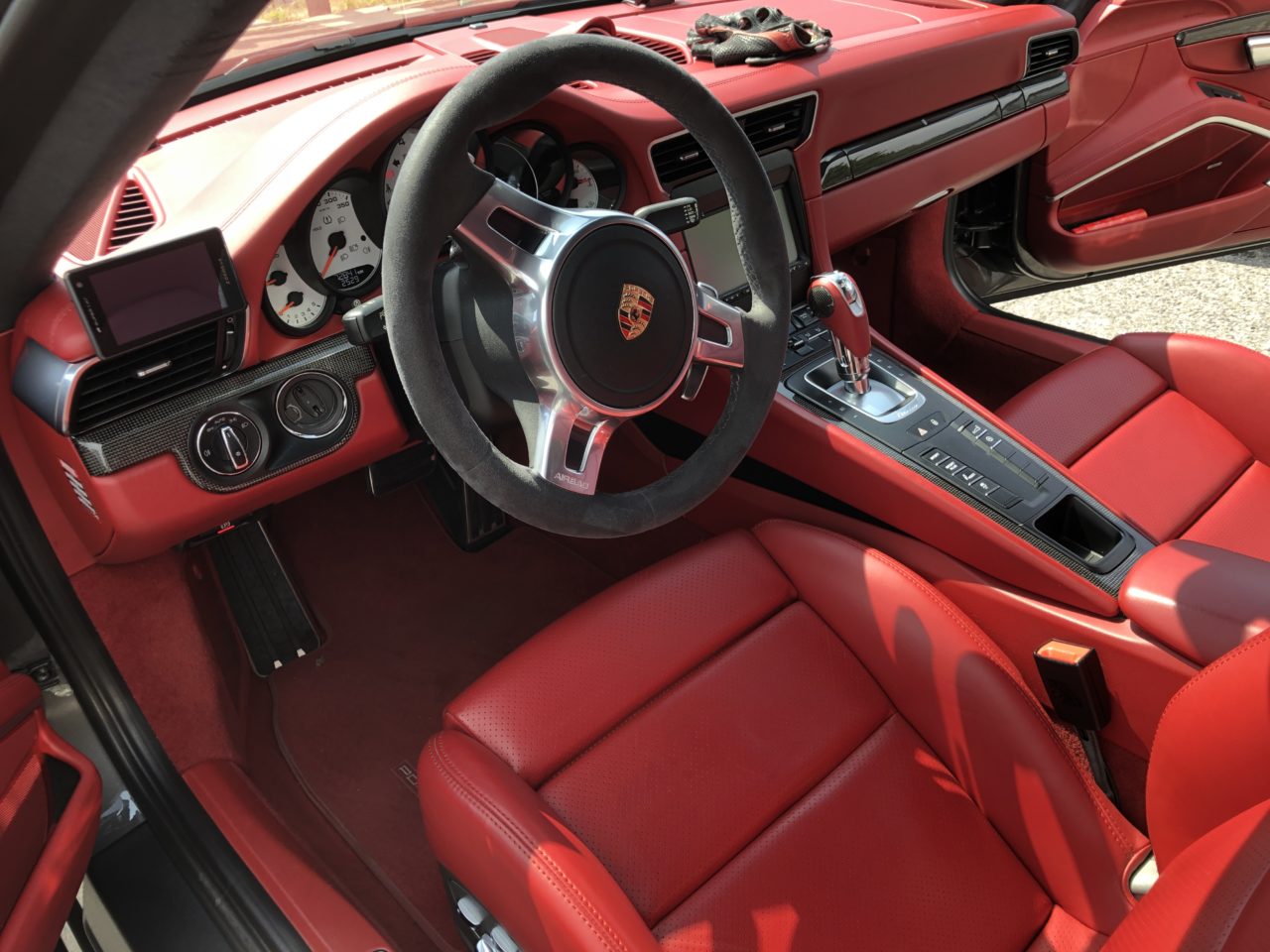
Looking at the center console, I was surprised to see Porsche Dynamic Chassis Control (PDCC) included! At this point, it’s basically a ‘Turbo S’ in everything but name.
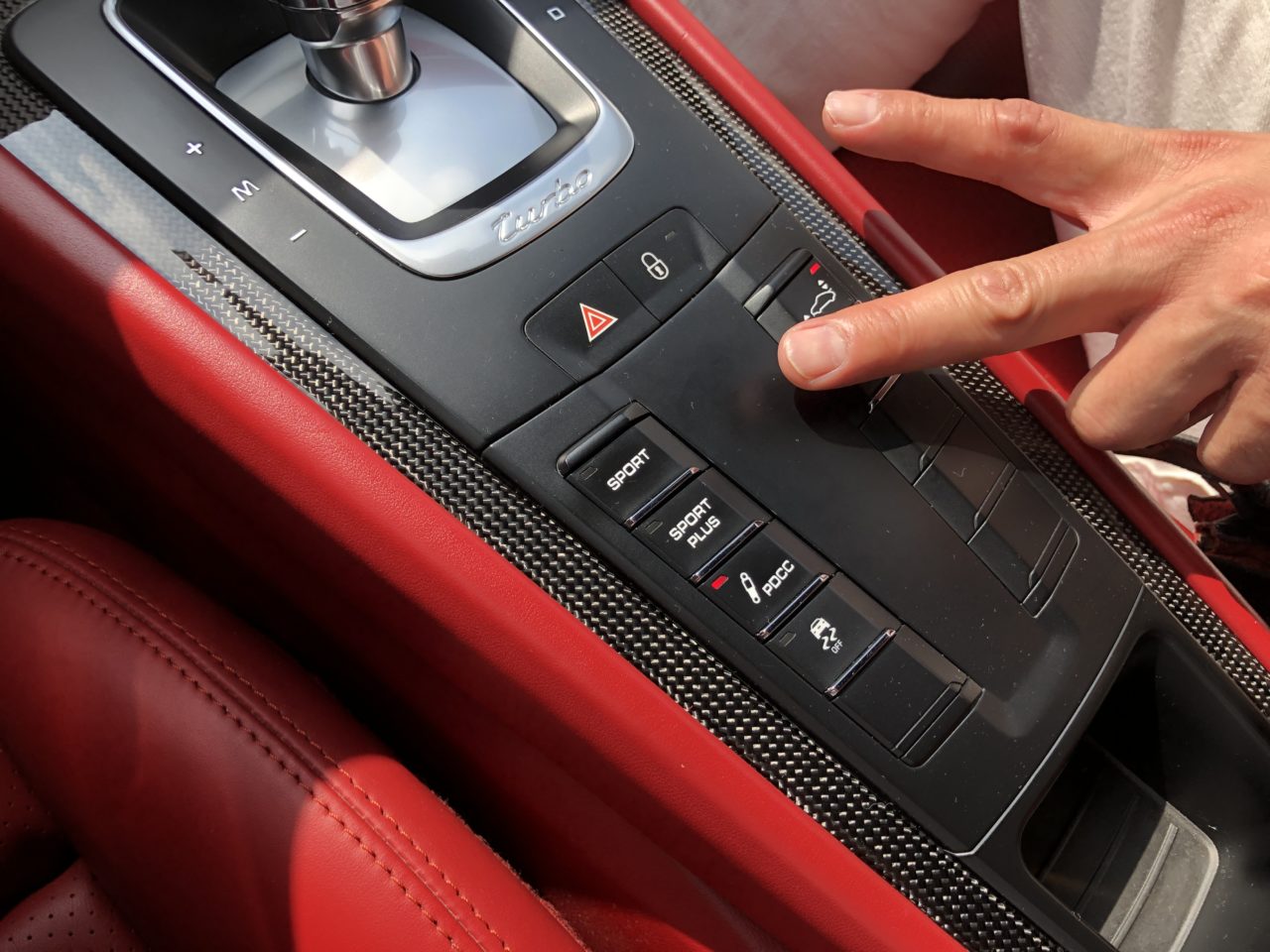
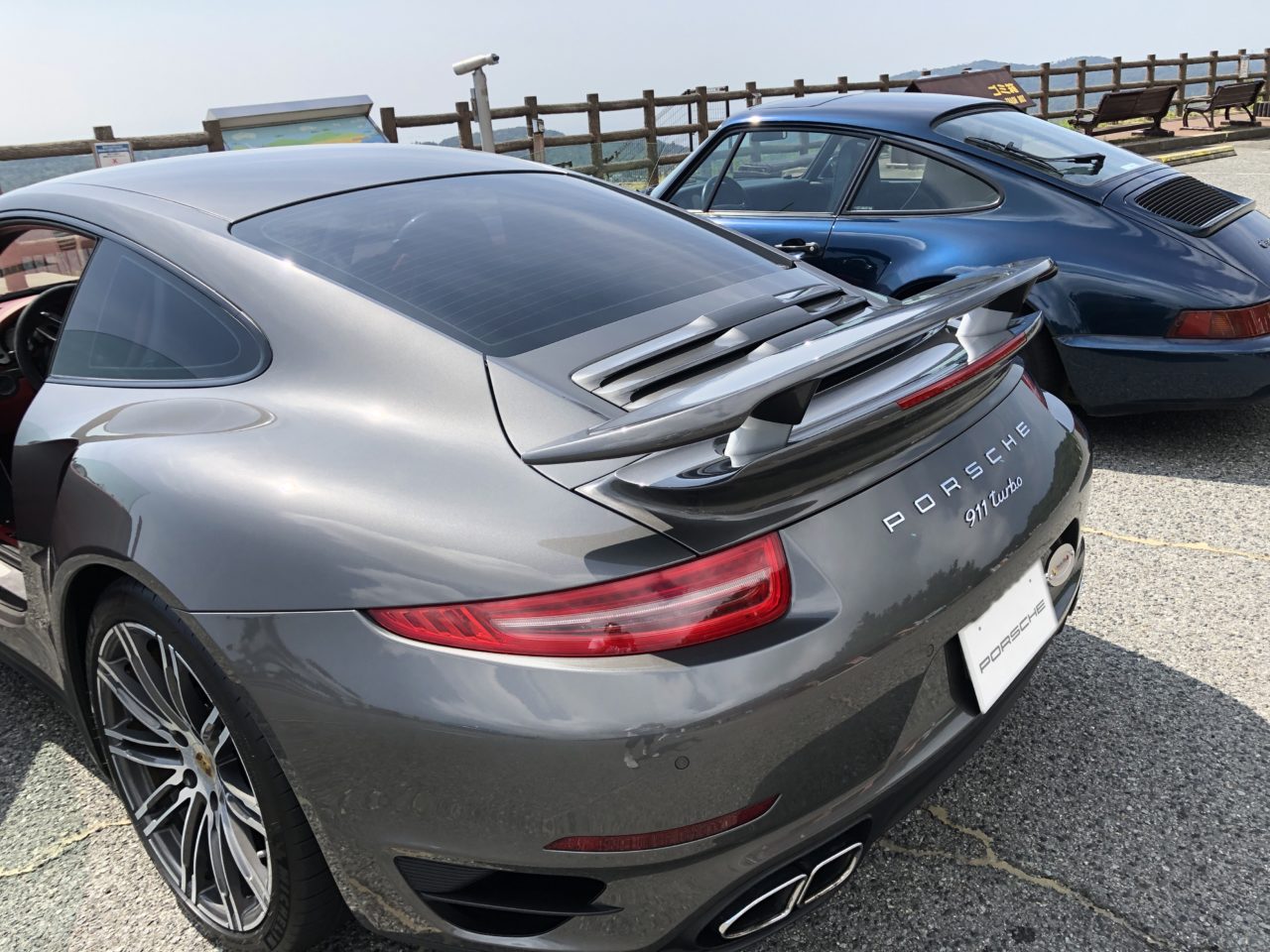
Starting the engine, it greeted me with a surprisingly gentle roar. “Gwon!” it barked once, with a low tone but not loud volume. While the current 992 models offer a sports exhaust option, the 991 Turbo does not. This reflects the ‘Turbo’s’ nature—prioritizing a refined and luxurious vibe.
Once moving, the car’s 383 kW (520 PS) / 6000-6500 rpm peak power felt far from aggressive; it started off very smoothly. I’m very sensitive to how a car initially moves and how the tires roll, and this car moves off with a smooth, thick torque feel.
There’s no sense of torque shortage or abruptness. In normal mode, the PDK transmission shifts eco-consciously through 3rd, 4th, and 5th gears, and even when you press the accelerator lightly, it accelerates smoothly without kicking down.
This sensation differs somewhat from the 991.2 GTS or the 992 Carrera 4S, which also have turbo engines.
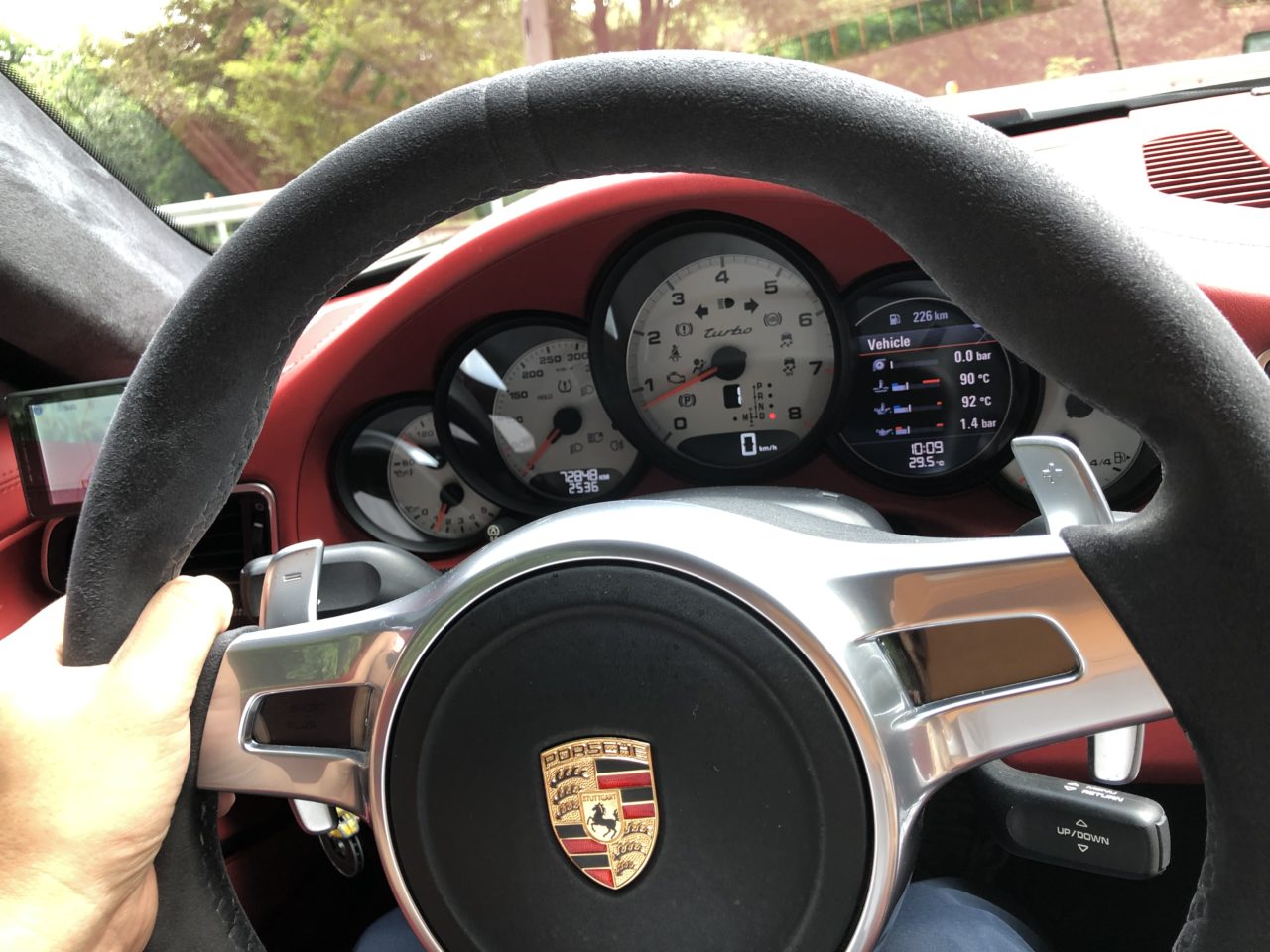
It has a deep throttle response that resists unnecessary kickdowns, making speed control around town speeds of 40–60 km/h very easy. The accelerator opening and speed increase feel almost perfectly proportional.
When I asked the owner, “It’s really easy to drive even at low speeds, isn’t it?” he said he uses this Turbo for his daily commute. Indeed, commuting in this car would be effortless. It’s that easy to drive.
Taking the 911 Turbo on Mountain Roads
Taking a few corners, I immediately noticed several points where I thought, “Ah, this is totally different!” First, the tire contact with the road is phenomenal. The GT3 is amazing, but this feels like a different kind of grip strength.
The GT3’s ultra-high-performance suspension presses the tires firmly to the road for nimbleness, but the Turbo’s suspension seems to use the car’s weight cleverly to press the tires down. This gives a pleasant sense of solidity and luxury.
Pushing the pace a bit through corners, there’s almost no body roll, and the rear feels like it pivots smoothly around. I asked, “Does this car have rear-axle steering?” The owner replied, “You can tell! Yes, it does have rear-axle steering.”
The effect of rear-axle steering in these situations is huge. Combined with the magic roll control from PDCC, it delivers outstanding cornering. The driver doesn’t have to worry—just turn the wheel, and the car corners effortlessly without a hint of strain. The strong grip and four-wheel drive traction mean nothing happens even at fairly high speeds.
I’ve driven many 991 911s, but the biggest difference here is the car’s sheer composure, unmatched by other trims.

I imagine that if an amateur like me raced a Turbo and a GT3 on the same circuit, the Turbo would definitely be faster. It’s a car that lets you drive fast with incredible confidence and without demanding extra skill or tension from the driver.
The stopping power from the PCCB brakes is, needless to say, tremendous, making speed control very easy. The PDK remains sharp as ever—switch to Sport Plus and manual mode, and it snaps through gears with satisfying clicks. I’ve said it many times on this blog, but I believe Porsche’s PDK is a step above other manufacturers’ dual-clutch transmissions.
In Sport Plus, lifting off the throttle produces a muffled backfire sound. However, it’s very restrained—not the loud roar of the 981 GTS or 991 GTS. It sounds distant from the driver’s seat, and this volume suits the gentle character of the ‘Turbo’ perfectly.
Regarding engine feel and acceleration, I didn’t push it to the redline this time, so I can’t comment on high-rev performance. But as you might expect, the low-to-mid range power is more than enough. I consciously compared it to the 991.2 and 992 Turbo engines, and the ‘Turbo’ feels superior in throttle response and low-end torque thickness.
It’s an engine that’s incredibly easy and pleasant to handle.
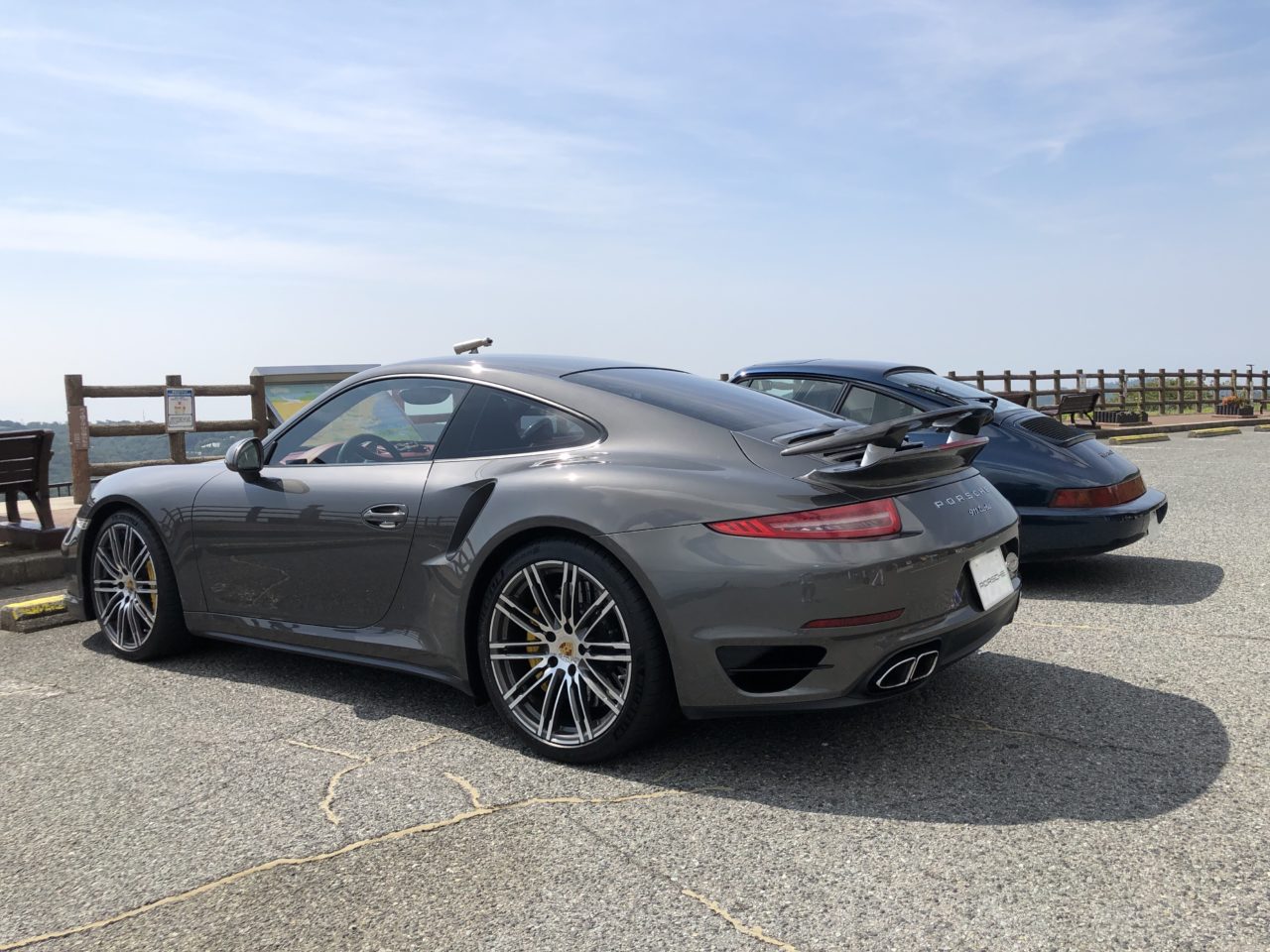
Final Thoughts on the Porsche 911 Turbo
After driving this ‘Turbo’, I’m convinced once again that the ‘Turbo’ is truly special. When I bought my Panamera Turbo, I also compared it with non-Turbo grades and clearly remember feeling the unique ride quality, solidity, and composure only a Turbo can offer.
This isn’t about engine power or displacement—it’s about the overall chassis tuning and character.
The same applies to this 911 Turbo: the difference lies not just in engine power but in the entire car’s and chassis’s character. I’m naturally a fan of NA engines and would usually choose an NA over a turbo if given the option.
However, when it comes to Porsche’s ‘Turbo’ grade, that preference doesn’t hold. That’s because the ‘Turbo’ grade offers charms that can’t be explained simply by the presence of a turbocharger.
Since this test drive, I’ve secretly been playing with the 992 Turbo S configurator quite a bit. Of course, buying one right away is impossible, but someday I’d love to own a Turbo S perfectly optioned to my liking, without compromise.
このブログが気に入ったらフォローしてね!


Comment ( 0 )
Trackbacks are closed.
No comments yet.